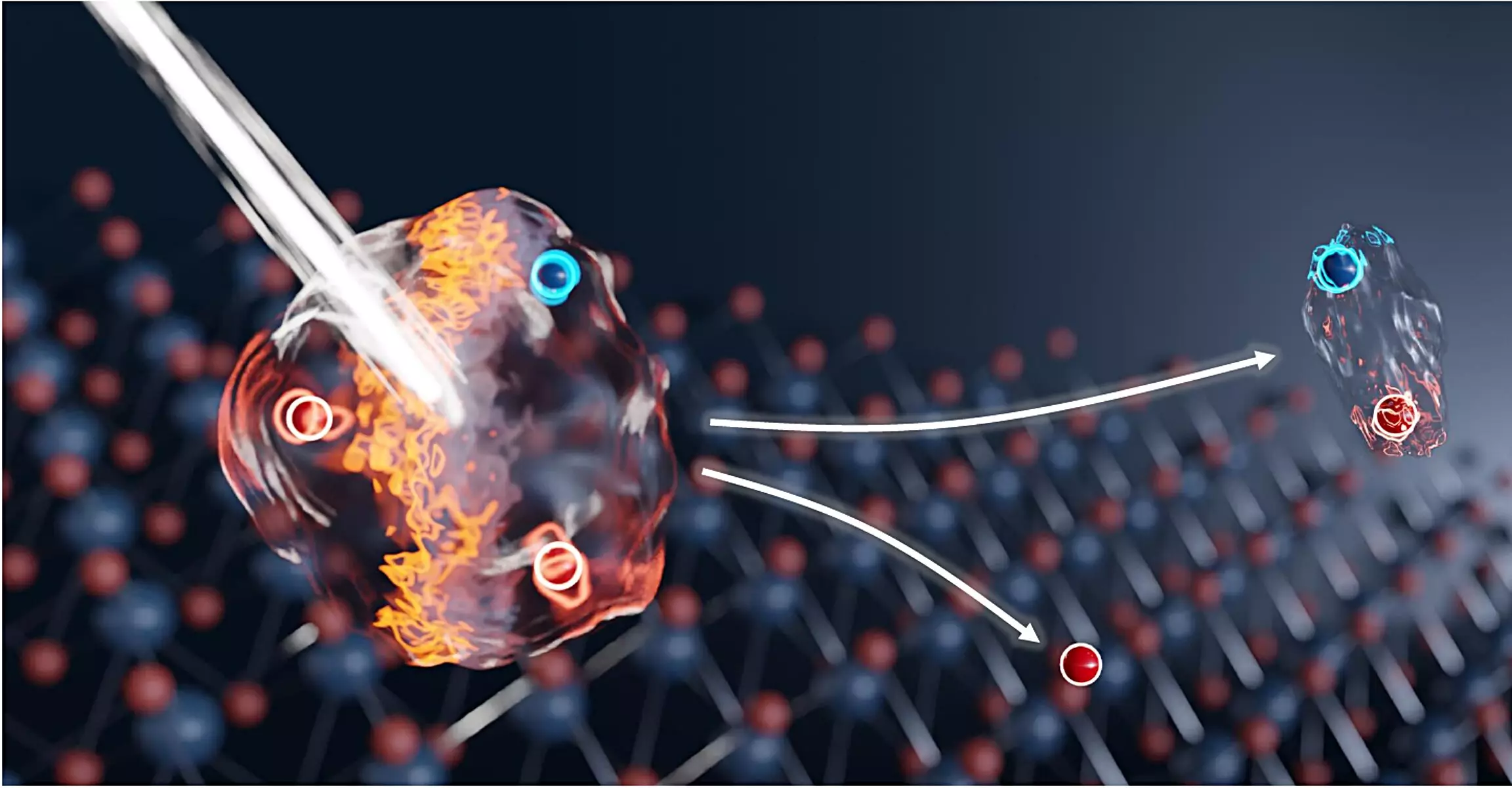Advancements in nanotechnology have opened new avenues in the realm of electronics, particularly with materials reduced to just a few atomic layers. These two-dimensional (2D) materials have unique optical and electronic properties that differ drastically from their bulk counterparts. This article discusses a groundbreaking experiment conducted by an international team led by TU Dresden at the Helmholtz-Zentrum Dresden-Rossendorf (HZDR), where they demonstrated an unprecedented speed in the switching behavior of luminescent particles within a 2D material—molybdenum diselenide. Their findings, published in Nature Photonics, could revolutionize optical data processing and sensor technologies.
In two-dimensional semiconductors, the interaction of electrons with holes (the absence of electrons) creates excitons—bound states of these charges that are essential for light emission. When an electron absorbs energy and transitions within the material, it vacates its position, leading to the formation of a hole. The resulting exciton pairs with additional electrons to create trions, which combine both electronic charge and intense light emission capabilities. This phenomenon has crucial implications for future electronic and optical applications, as it allows for the potential control of electronic states via optical means.
The core of this experiment is the exceptional speed at which researchers induced the transition between excitons and trions. Prior experiments in this area encountered limits in switching speeds, leading to a desire for faster and more efficient methods. Led by physicist Dr. Stephan Winnerl, the team employed terahertz pulses—radiowaves that exist between the microwave and infrared bands—to manipulate these particles. The impressive aspect of their approach lies in the ability to switch between states nearly a thousand times faster than previous electronic methods, taking place in mere picoseconds.
The researchers illuminated the ultra-thin layer of molybdenum diselenide with short laser pulses to create excitons in cryogenic conditions, which then promptly formed trions. The subsequent application of terahertz radiation facilitated the rapid transition back to excitons, demonstrating a controllable process that holds immense promise for future technological applications.
The implications of this research extend far beyond theoretical intrigue. One key application could be in the realm of sensor technology, specifically in developing detectors capable of operating in the terahertz range. The ability to manipulate excitons and trions means components could become incredibly compact and efficient, allowing for heightened sensitivity in optical data processing and imaging. As Dr. Chernikov notes, even relatively low-intensity terahertz radiation may suffice to trigger the rapid switching mechanism, making this technology accessible for diverse applications.
Another area ripe for exploration is in modulators—devices that manipulate light. The adaptation of this rapid switching effect could lead to new types of modulators that facilitate quick alterations of optically encoded information. Such developments can significantly enhance data transmission rates in optical communication systems, providing a substantial improvement over existing technologies.
The researchers’ work also opens doors for exploring complex quantum states that arise from strong particle interactions. Delving into these phenomena can contribute to a better understanding of the fundamental principles that govern quantum systems, potentially leading to the discovery of new materials with exotic properties. Future research may involve extending these rapid switching techniques to other two-dimensional materials, paving the way for room-temperature applications that harness quantum mechanics for practical use.
The astonishing progress made by the TU Dresden-led team signifies a notable breakthrough in material science and nanotechnology. By establishing a method that allows for the rapid, controlled switching between excitable states in two-dimensional semiconductors, they not only push the boundaries of current understanding but also lay the groundwork for innovative applications in electronics. The integration of these developments could lead to a new era in optical data processing, advanced sensing capabilities, and the potential for exploring new physical phenomena in materials science. As we stand on the brink of these advancements, the implications for electronics and quantum technologies remain vast and largely untapped.

